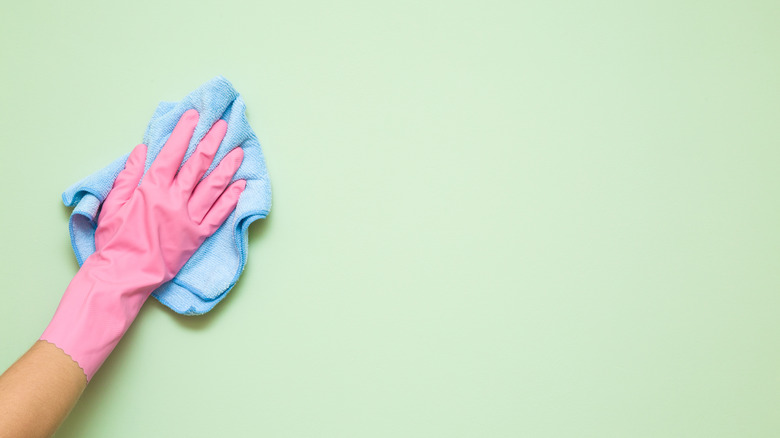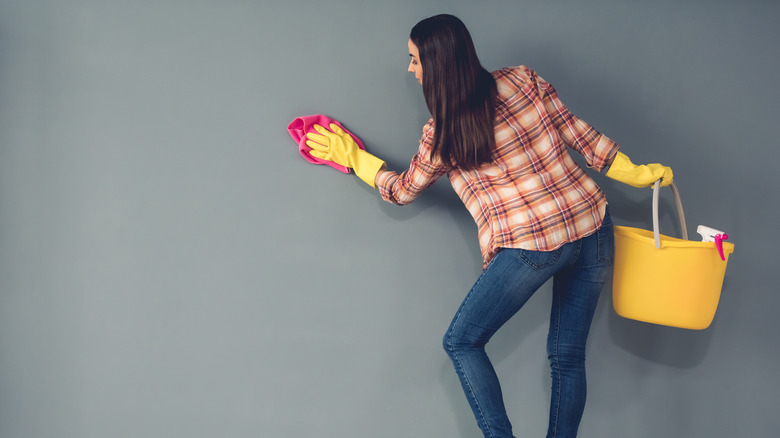You're Probably Cleaning Your Walls The Wrong Way
You may be a pro cleaner when it comes to vacuuming and mopping up the rooms in your home. But did you know that it's just as important to clean your walls, too? Much like your floors, dust and grime also gets stuck to your walls, and over time, it adds a dingy look to the room. While washing the walls in your home can be as easy as grabbing a bucket with some water and dish soap or cleaning solution, there is one crucial step in the wall washing routine that many people forget to do, or may not even be aware it needs to be done. Missing this one particular step in your cleaning process can lead to less than stellar results, causing your room to look just as dingy as it started. If you're going through the trouble of cleaning your walls, it's important to do it right so it's fresh and clean.
Fortunately, there is a trick to washing your walls. Interestingly, some walls are actually easier to clean than others. For instance, some people end up regretting their chalkboard paint wall. But each and every kind of wall requires one crucial step when cleaning them in order to look brand new again. (Hint: It has to do with what happens after you finish washing the walls that's really important!) Keep reading to find out what you need to do.
Wiping down is just as important as wiping off
You can wipe off dust and dirt from walls with a simple sponge dipped in water and dish soap, but the most important step is what comes after you finish cleaning the surface. It's crucial to do a second step and take time to dry the walls with a clean cloth in order to eliminate spots and discolorations. According to Elite Finisher, a commercial and residential painting and drywall service company, you can create water stains on the paint if you don't wipe down the walls after washing them. And once these stains dry, you may not be able to get them out. So, not only will you not get the grime completely off your walls, but the walls can look worse than they did before you even started cleaning if you don't do this drying step.
Another tip that will prevent having to clean water stains is to start washing the walls from the bottom up, as in from the baseboards up to the ceiling. According to Mr. Maid, a Pittsburgh-based house cleaning service, if you wash the reverse way (from the ceiling downward to the baseboard), the water will streak down over the dusty walls and create streaks. Save yourself some muscle and aggravation. Follow these tips on how to avoid streaking your walls, and the task will be so much easier. The next time you are ready to clean your walls you will be ready for great results.

